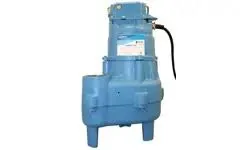English
- Afrikaans
- Albanian
- Amharic
- Arabic
- Armenian
- Azerbaijani
- Basque
- Belarusian
- Bengali
- Bosnian
- Bulgarian
- Catalan
- Cebuano
- Corsican
- Croatian
- Czech
- Danish
- Dutch
- English
- Esperanto
- Estonian
- Finnish
- French
- Frisian
- Galician
- Georgian
- German
- Greek
- Gujarati
- Haitian Creole
- hausa
- hawaiian
- Hebrew
- Hindi
- Miao
- Hungarian
- Icelandic
- igbo
- Indonesian
- irish
- Italian
- Japanese
- Javanese
- Kannada
- kazakh
- Khmer
- Rwandese
- Korean
- Kurdish
- Kyrgyz
- Lao
- Latin
- Latvian
- Lithuanian
- Luxembourgish
- Macedonian
- Malgashi
- Malay
- Malayalam
- Maltese
- Maori
- Marathi
- Mongolian
- Myanmar
- Nepali
- Norwegian
- Norwegian
- Occitan
- Pashto
- Persian
- Polish
- Portuguese
- Punjabi
- Romanian
- Russian
- Samoan
- Scottish Gaelic
- Serbian
- Sesotho
- Shona
- Sindhi
- Sinhala
- Slovak
- Slovenian
- Somali
- Spanish
- Sundanese
- Swahili
- Swedish
- Tagalog
- Tajik
- Tamil
- Tatar
- Telugu
- Thai
- Turkish
- Turkmen
- Ukrainian
- Urdu
- Uighur
- Uzbek
- Vietnamese
- Welsh
- Bantu
- Yiddish
- Yoruba
- Zulu
Telephone: +86 13120555503
Email: frank@cypump.com
Nov . 01, 2024 15:10 Back to list
Understanding the Importance of Slurry Pump Impellers in Industrial Applications
Understanding Slurry Pump Impellers Key Components for Efficient Transport
Slurry pumps are vital equipment used in various industries for transporting slurries—mixtures of liquid and solid particles. One of the most crucial components of a slurry pump is the impeller, which plays a significant role in defining the pump's efficiency, performance, and lifespan. In this article, we will explore the design, functionality, and importance of slurry pump impellers.
The Role of Impellers in Slurry Pumps
The impeller is the rotating part of the pump that provides energy to the slurry, converting mechanical energy into hydrodynamic energy. As the impeller rotates, it imparts velocity to the slurry, pushing it through the pump and into the discharge line. The design and material of the impeller greatly influence the pump's ability to handle various types of slurries, ranging from coarse particles to highly viscous fluids.
Types of Impellers
Slurry pump impellers can be classified into several types based on their design
1. Open Impellers These impellers have no shroud and are designed for handling slurries with larger solid particles. Their open design minimizes blockage and allows for easy passage of solids, making them particularly suitable for applications in mining and dredging.
2. Closed Impellers Containing shrouds on both sides, closed impellers are more efficient in transferring energy to the fluid. They are ideal for applications requiring high pressure and are commonly used in the chemical and wastewater treatment industries. However, they may struggle with large solids.
3. Semi-Open Impellers These impellers feature a shroud on one side and are designed to offer a balance between the efficiency of closed impellers and the ability to handle larger particles like open impellers. They are versatile across a range of applications.
slurry pump impeller

Material Considerations
Given that slurry often contains abrasive materials, the choice of material for impellers is crucial. Common materials include
- Cast Iron Known for its durability and resistance to wear, cast iron is often used for non-corrosive applications. - Nickel-Alloyed Steels These materials provide excellent resistance to corrosion and wear, making them suitable for chemical processes. - Rubber Linings Rubber-coated impellers are effective in reducing wear in applications with highly abrasive slurries.
Selecting the right material not only ensures the longevity of the impeller but also enhances the overall efficiency of the slurry pump.
Impeller Design Factors
The design of a slurry pump impeller must take into account several factors, including
- Diameter and Width Larger impellers can move more slurry at a lower rotational speed, while narrower impellers can increase pressure but may clog with larger particles. - Blade Design The angle and shape of the blades affect the flow rate and efficiency of the pump. - Performance Curves Understanding how the impeller performs under various conditions helps in optimizing the pump's operational efficiency.
Conclusion
In summary, slurry pump impellers are fundamental components that greatly impact the efficiency and effectiveness of slurry transport systems. By carefully considering the type of impeller, materials, and design factors, industries can select the most appropriate slurry pump for their specific applications. As technology continues to evolve, advancements in impeller design and materials will further enhance the performance of slurry pumps, making them even more reliable and efficient in handling a wide array of challenging materials.
-
Heavy-Duty Mining Sludge Pumps - Wear-Resistant Slurry Handling
NewsAug.02,2025
-
Horizontal Split Case Pump with GPT-4 Turbo | High Efficiency
NewsAug.01,2025
-
ISG Series Pipeline Pump - Chi Yuan Pumps | High Efficiency, Durable Design
NewsAug.01,2025
-
Advanced Flue Gas Desulfurization Pump with GPT-4 Turbo | Durable & Efficient
NewsJul.31,2025
-
ISG Series Vertical Pipeline Pump - Chi Yuan Pumps | Advanced Hydraulic Design&Durable Construction
NewsJul.31,2025
-
ISG Series Vertical Pipeline Pump - Chi Yuan Pumps | Energy Efficient & Low Noise
NewsJul.31,2025










